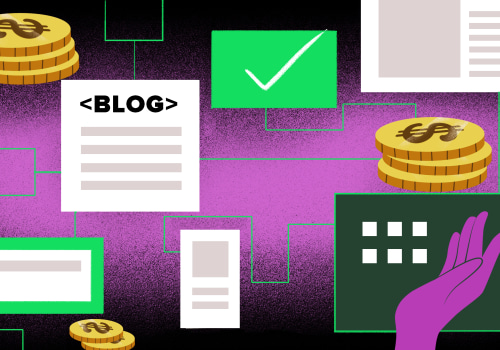Web design software provides users with the tools to create, edit and update web pages. Web designers use these programs to create the design and content of a web page by editing HTML or a WYSIWYG editor. In this article, we will explore some of the most popular web design software available today, including Wix, Adobe Dreamweaver, Weebly, Webflow, and Bluefish. Wix is more of a website builder than a coding platform, but it is one of the most popular online website builders, offering a range of plans and products.
The free version is Wix branded, limited storage space and bandwidth, but moves to the most popular plan (unlimited) and there are no Wix ads. All the major editing features are designed very intelligently and work more like a native application than an average website builder. However, Wix has some weaknesses, and technical support seems a little slow and limited in some respects. But there is no denying that the magnificent editor and the range of top-notch templates make it easy for beginners in web creation to create something impressive. Adobe Dreamweaver is a long-standing application that allows you to code the design of your website directly, without having to know much about programming.
The software works through a combination of visual editing and HTML editing, meaning it shouldn't have too steep a learning curve for most users. However, if you're a more advanced user, you'll be pleased to hear that Dreamweaver offers multi-monitor support for Windows. It also supports the Chromium Embedded Framework (CEF) to work with HTML5 elements and CSS grids. In addition, there is also support for Git, which allows you to edit the source code directly from within Dreamweaver. Weebly is another online CMS, this time aimed at people with little or no coding experience, by providing easy-to-use drag-and-drop tools to create a website.
Weebly also offers users the ability to create online stores using existing templates to work with its simple website creation framework. The number of themes available for Weebly is somewhat limited, but the designs are clean and professional looking, plus there are options to customize them accordingly. In addition, the themes are adaptable, which means that they are optimized to work with mobile devices, in addition to having built-in SEO, analytics and even a function to serve ads directly on Facebook. Webflow is a cloud-based service that has been created specifically to allow people without coding knowledge to get started with web design. In addition to being truly cross-platform, since it is web-based, Webflow emphasizes the concept of “lack of intelligent code”.
First of all, this means a crisp drag-and-drop interface that allows you to drop elements such as text and images seamlessly onto a page using one of the freely available templates. Webflow offers a free demonstration of its features via the website, and you can also subscribe to a free Starter package that allows you to create up to two projects. Bluefish is one of the smallest web design tools available today. The small installer takes just a few minutes to set up. While the interface is text-only, it's clearly designed with beginners in mind, using clear toolbars, user-customizable menus, and syntax highlighting.
While the main focus is on HTML, Bluefish supports a wide range of other languages, including PHP, Java, JavaScript, SQL, XML, and CSS. Unlike visual WYSIWYG web design tools, the text interface makes the code much cleaner. Bluefish has an excellent search function which allows you to find text in various projects. The tool also has no problem juggling hundreds of documents at the same time.
Although Bluefish supports working with remote files, the many useful dialogs and wizards currently do not support direct uploading of web pages via FTP. Despite the best efforts of developers, Bluefish may take some time to get used to. However, the tool is available for free so you have nothing to lose if you try it. Wix is an easy-to-use web design software for beginners. Don't know where to start? Choose from more than 800 templates or answer a few questions from Wix Artificial Design Intelligence (ADI).
ADI will automatically create a website based on your answers. To customize it drag and drop the elements onto the screen and edit them as you see fit. The fight to become web design's favorite user interface design tool has been hard-fought over the past decade with Adobe XD Sketch Affinity Designer and others having eliminated it But for our money the effort Adobe has dedicated to developing XD makes it essential web design software for creatives In short XD is the complete package when it comes to prototyping and there is even a free version capable However the different ways to get XD get a little tricky so check out our guide on how to download Adobe XD to see your options. With 15 years of existence Weebly does what it does very effectively And that's providing easy-to-use templates and e-commerce options for everyone Less is definitely more with Weebly and while you have a limited number of templates and themes to choose from what there is a good range of clear and clean options that have enough customization space to keep creatives happy By the way you can try a free version of Weebly for the restricted use of its features which is perfect to see if this is the right option for you If you think so there are more tiered options available depending on what you want. Another web-based option that is perfect for beginners who want to create a quality website with minimal effort As is common with the best web design software there is a very easy to use drag-and-drop approach to creating a Webflow website using many of its well-thought-out templates Are you creating a design system for your web work? Pattern Lab is a frontend shop environment that can serve as your operations center and helps you.




